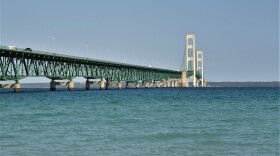-
An academic perspective on President Donald Trump’s move to eject Michigander Lisa Cook at the Federal Reserve. A profile of the man responsible for a surprising percentage of Detroit’s commercial signage. And, a conversation with Michigan Public’s retiring environment reporter, Lester Graham.
-
A circuit court judge in Lansing has denied a request by Enbridge to put a hold on the state court case filed by Attorney General Dana Nessel. The AG took Enbridge to court six years ago.
-
A number of deteriorating dams have been torn down and streams restored. It's expensive, and Michigan's budget is facing challenges.
-
The International Joint Commission has issued a draft report on Protection of the Waters of the Great Lakes, a ten-year review on the consumptive use, diversion, and removal of water from the Great Lakes.
-
The massive oil spill in the Kalamazoo River 15 years ago polluted the water and shoreline and left oil-coated wildlife. More than a million gallons of oil was recovered along a more than 35 mile stretch of the river.
-
The National Wildlife Federation says Michigan's environment department should fully review what damage drilling the tunnel for a new pipeline segment might cause.
-
The Great Lakes piping plover recovery effort has been ongoing since the mid-1980s when the population got as low as a dozen nesting pairs. This year, the number reached 85 nesting pairs for the first time.
-
Each summer, Lake Erie is plagued by toxic cyanobacterial blooms fed by phosphorus runoff from farm fields. Michigan is struggling to reduce the pollution by 40%.
-
A new study shows the Great Lakes are vulnerable to more extreme temperature highs and lows over the decades due to climate change.
-
The new lock at the Soo Locks in Sault Ste. Marie is in the third phase of construction. The megaproject is over budget and funds to finish the lock are uncertain. A federal report found if the current lock for large ships fails, it could cause a deep recession, leading to as many as 11 million people to be unemployed.
Play Live Radio
Next Up:
0:00
0:00
Available On Air Stations










